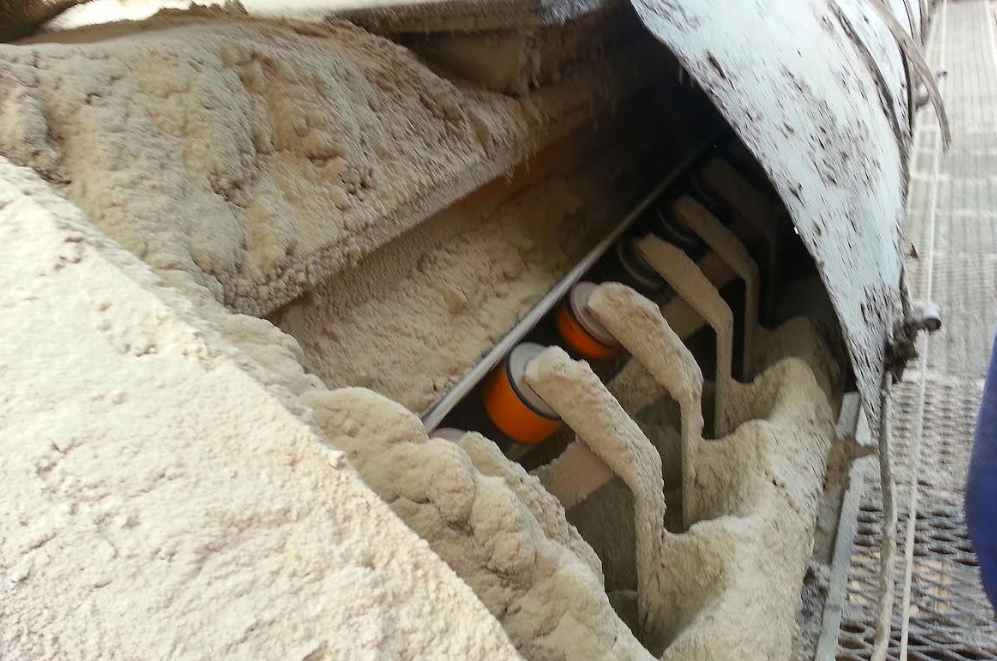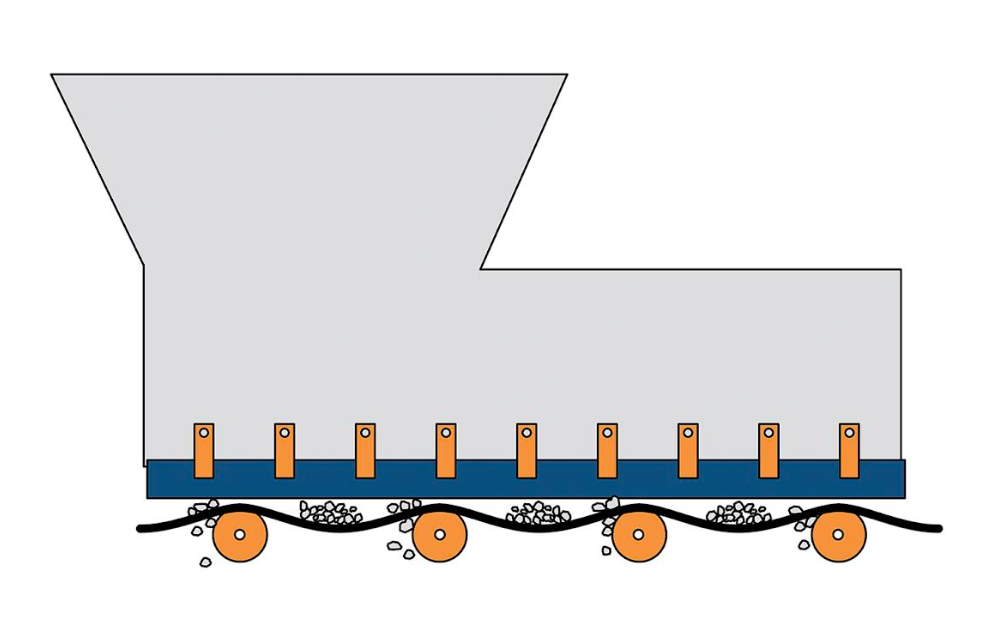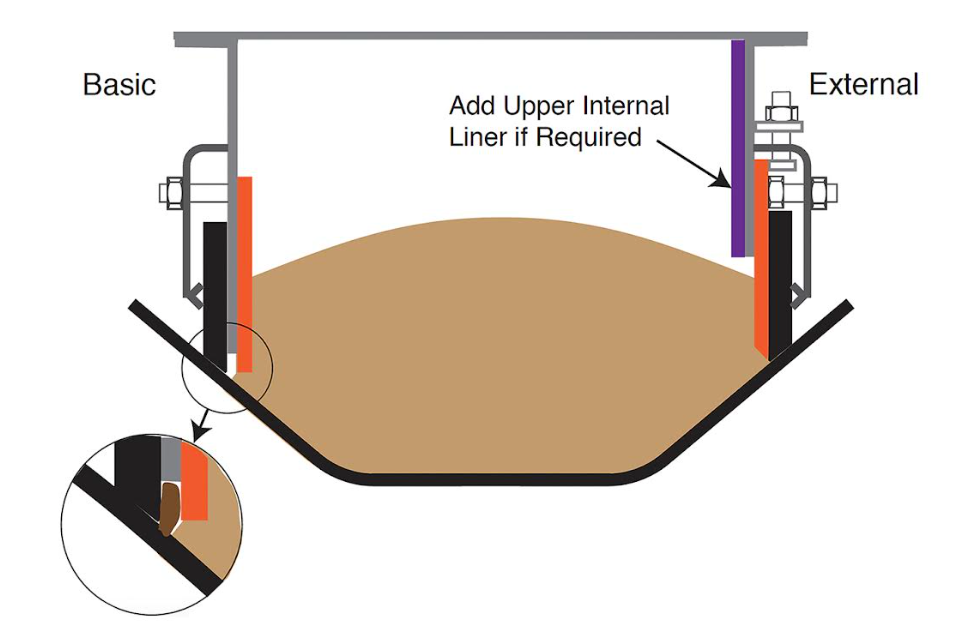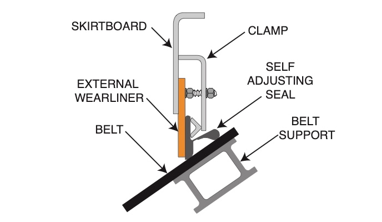Martin Engineering: Beat conveyor dust with skirtboard sealing


Part of an efficient and clean working environment is sealed conveyor chutes for bulk handling. The latest of these innovations is the ApronSeal double skirting designed and built by Martin Engineering offereing extra sealing in high dust environments and a self-adjusting skirting system with limited maintenance.
When tonnes of transferred bulk material hit a moving belt, three things happen: fines scatter, cargo shifts as it settles, and dust becomes airborne. The impact can create turbulent air that seeks the easiest escape from any gap it can find, carrying dust and fines with it. These gaps generally appear on the sides of the enclosure between the chute wall and the belt. Skirting systems address the challenge of containing fugitive dust and spillage.
Usually made from natural or SBR rubber (or specialty formulations for specific applications such as underground mining), the skirting extends down the entire length of the transition enclosure and is generally tapered at the bottom to match the trough angle of the belt. It is intended to maintain a seal on the enclosure and help trap any fine particles and dust that is not contained by the wear liners and chute wall.
As the skirt edge loses its seal, gaps are created, which allow material to become trapped in a “pinch point.” This causes abrasion that gouges or chafes the surface of the belt down its entire length. Some of the major issues from entrapment include scalloping, when wedged material causes excessive wear, and grooves, when debris collects under the skirt causing friction damage. Regardless of the belt tension, belt sag will create a space for fugitive dust to escape or for material to become trapped. [Fig.1] This is avoided by retrofitting a skirt sealing system with impact cradles or edge support rather than rollers in the loading zone.

Proper Enclosure Configuration
Wear liners are typically welded to the inside of the chute wall with the skirtboard attached on the outside using an adjustable clamp system. However, the internal design [Fig.2] can allow some material buildup in the gap between the wear liner and the skirtboard, depending on the size of the aggregate.

External wear liner and skirting configurations place both pieces of equipment outside the chute wall. [Fig.3] Placing the skirt seal and wear liner outside of the chute makes it easier for workers to perform adjustments safely. The result is a better seal on the belt and less material entrapment.

Self-adjusting skirting maintains a seal automatically as belt path fluctuates due to its design, without the need for adjustment and only periodic inspection. A low-profile skirting assembly should need only 152 mm of clearance for installation and maintenance in small spaces.
Skirting Best Practices
Since skirts are wear parts, it is important that they are easily installed, adjusted, maintained, and replaced to avoid dust and spillage, mitigate downtime, improve workplace safety, and reduce the cost of operation. Managers contemplating a capital investment in a skirting and wear liner system should consider:
Conclusion
By installing modern skirtboards that prevent fugitive material from leaving the loading chute, operators can reduce worker exposure to hazards, minimize labor for maintenance and cleanup, improve equipment and belt life and achieve better compliance. The savings on labor and operating costs alone provide a sound return on investment, but the improvement to workplace safety should be the only motivation needed.
Learn more at www.Martin-Eng.com.
Dave Mueller is product manager at Martin Engineering
Comments